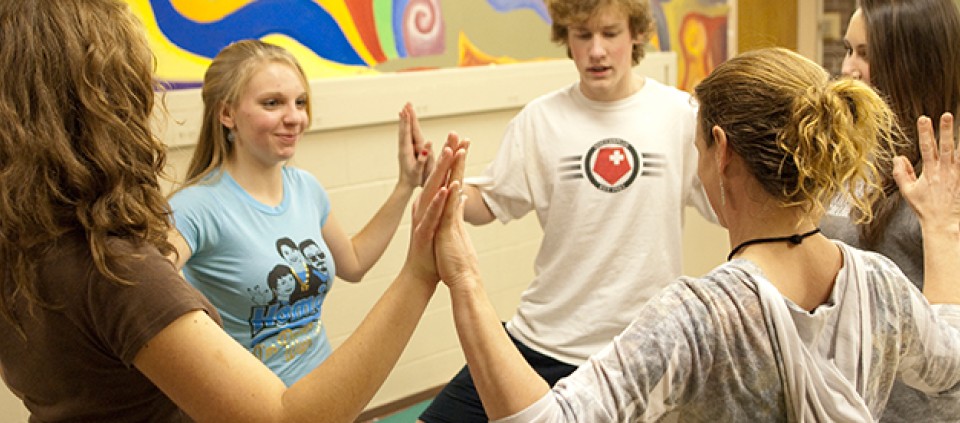Yoga in Schools: Phys Ed for the 21st Century

From Encinitas, California, to Baltimore, Maryland, educators, legislators, and activists are doing their part to bring yoga into the schools. As this movement grows, Kripalu is working with school educators and wellness experts to help share the calming effects of yoga to children and adolescents.
Through learning breathing practices, yoga postures, deep relaxation, and meditation, this younger generation is experiencing the connection between mind and body at an early age.
Research shows that yoga and other contemplative practices can help kids better regulate their emotions and behaviors in healthy ways. Findings from the Kripalu Yoga in the Schools (KYIS) initiative show that students who have been exposed to these techniques are less reactive, more optimistic, and better able to focus, concentrate, and interact with their peers.
“Yoga is showing up in many school settings nationwide,” says Edi Pasalis, Director of the Institute for Extraordinary Living (IEL), which administers the KYIS project. “It helps teachers create a more potent learning environment [and] helps students learn.”
“We live in a stressful society where kids are under a lot of pressure,” says Kripalu-affiliated researcher Sat Bir S. Khalsa, PhD, of Harvard Medical School. He says that, for many adolescents, stress contributes to anxiety, depression, and drug abuse.
“One concept that is underrated is the degree to which adolescents [in particular] are suffering mental-health issues,” says Sat Bir. “Kids are not coping well—you have bullying and attention deficit disorders. Our education system needs to teach skills to develop the whole human being, not just math and English.”
Sat Bir notes that many adult behaviors and patterns begin in adolescence, including mental-health issues, so it’s important to teach these mindfulness tools early on. His research shows that long-term yoga and meditation practice changes the part of the brain that regulates resilience to stress and emotional reactivity.
Ali Smith, Executive Director of the Holistic Life Foundation, has helped bring yoga to Baltimore’s inner-city schools for more than 12 years.
“It has definitely paid off,” Ali says. “We’ve seen better self-regulation skills. Before, kids would have just acted impulsively and flown off the handle. Now, they are much more in touch with their thoughts, emotions, and energy level, and there is a lot more love for themselves and others.”
Ali teaches students how to center themselves and meditate, but 99 percent of what he teaches, he says, is how to breathe. “Most people don’t know how to take a deep breath,” he says.
“One of the cool things [to see] is kids helping other kids,” Ali says. “For example, they’ll lead their class in pranayama before standardized tests. At the root of what we’re teaching is [the idea that] you’re learning it to help yourself, but you’re really learning it to help others.”
Not surprisingly, students are taking the practice home. “We’ve had parents come home stressed, and their children tell them how to sit down, breathe, and meditate,” Ali says. One woman reported that, after she complained of stomach pains, her 9-year-old granddaughter, Anajay, taught her a breathing technique that includes curling the tongue—sitali kriya, or "cooling breath."
Timothy B. Baird, superintendent of the Encinitas (California) Union School District, implemented a district-wide yoga-in-the-schools program that received national attention. He says, “I’ve been calling this ‘P.E. for the 21st century.’ It teaches them the tools to relax and de-stress, and you know dodgeball doesn’t do that.”
© Kripalu Center for Yoga & Health. All rights reserved. To request permission to reprint, please e-mail editor@kripalu.org.